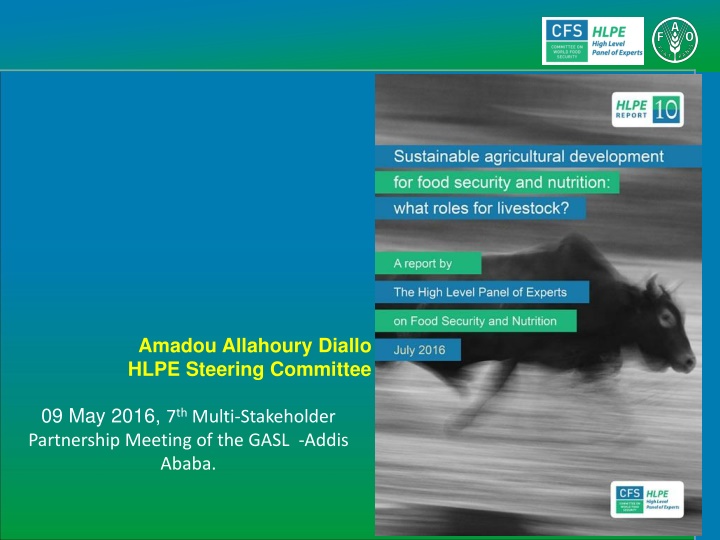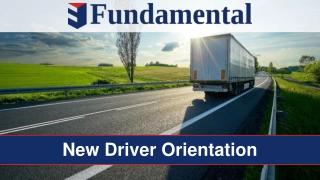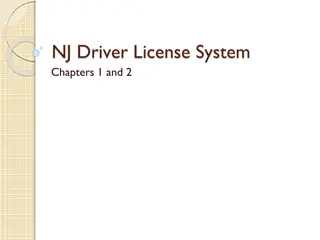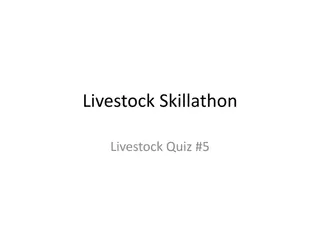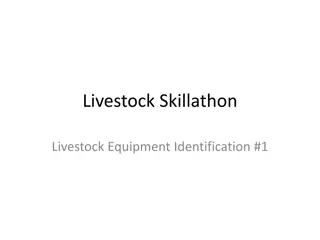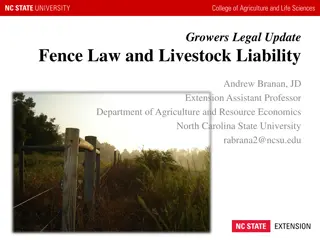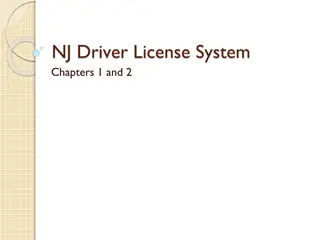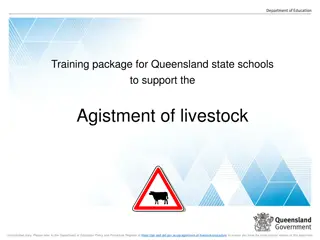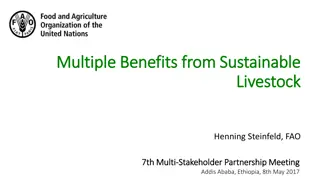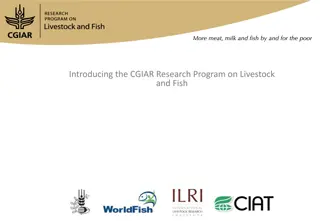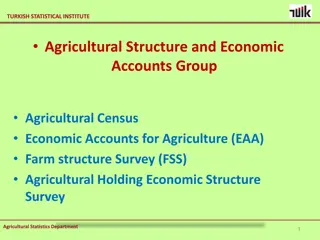Livestock: Key Driver for Sustainable Agricultural Development
Livestock plays a crucial role in sustainable agricultural development by driving land use, consumption, and serving as a powerful engine for food systems. The focus on livestock is essential for exploring pathways towards Sustainable Agricultural Development (SAD) and addressing challenges related to food security and nutrition. This report outlines the conceptual framework of SAD, trends in agricultural development, sustainability challenges for livestock, and recommendations for enhancing livestock sector sustainability.
Download Presentation

Please find below an Image/Link to download the presentation.
The content on the website is provided AS IS for your information and personal use only. It may not be sold, licensed, or shared on other websites without obtaining consent from the author.If you encounter any issues during the download, it is possible that the publisher has removed the file from their server.
You are allowed to download the files provided on this website for personal or commercial use, subject to the condition that they are used lawfully. All files are the property of their respective owners.
The content on the website is provided AS IS for your information and personal use only. It may not be sold, licensed, or shared on other websites without obtaining consent from the author.
E N D
Presentation Transcript
Amadou Allahoury Diallo HLPE Steering Committee 09 May 2016, 7th Multi-Stakeholder Partnership Meeting of the GASL -Addis Ababa.
Why a focus on livestock? Livestock is a: driver of land use and cereal and oilseed consumption powerful engine and a key driver for sustainable agriculture and food system development good illustration to explore possible pathways to SAD sector that has often not received the balanced attention it deserves concerning SAD for FSN Many challenges for SAD are related or depend on the evolution of the livestock sector 2
Outline of the Report 1. Sustainable Agricultural Development for Food Security and Nutrition: approach and conceptual framework 2. Trends and drivers of agricultural development 3. Sustainability challenges for livestock in agricultural development 4. Pathways towards SAD focusing on livestock 5. Recommendations 3
SAD for FSN : approach and conceptual framework What is SAD for FSN Sustainable agricultural development is agricultural development that contributes to improving resource efficiency, strengthening resilience and securing social equity/responsibility of agriculture and food systems in order to ensure food security and nutrition for all, now and in the future. Agricultural Development in relation to FSN Agricultural development (AD) is key to FSN (availability, access, utilization and stability) Sustainable Agricultural development for FSN (impact on water availability and quality, soil degradation, air quality, GHG emissions, climate change, ecosystems, biodiversity ) 4
Key roles of the livestock sector Livestock production is central to food system development : around 1/3 of global agricultural gross production value Livestock makes a huge positive contribution to livelihoods and nutrition : in 2010, animal source food contributed to 16 % of total calories and 31 % of protein globally Livestock is integral to livelihoods, cultural identity and traditional practices Livestock has both major positive and negative effects on the environment 6
Typology of farming systems 1. Smallholder mixed farming systems 2.Pastoral systems 3.Commercial grazing systems 4.Intensive livestock systems (Constantly evolving and in many countries there is a mix of systems) 7
Trends and drivers of AD Given current trends, to meet food demand by 2050 : Global agricultural production is expected to increase by 60 % in volume Global meat production could increase by 76 % and milk production by 62% (This increase in livestock production will occur mostly in developing countries) 8
Main drivers of AD Demographic changes Economic growth Urbanization Changing dietary preferences and patterns 9
Sustainability challenges for livestock in AD: cross-cutting global challenges FSN challenges (triple burden : Hunger, micronutrients deficiency, increasing overnutrion) Environmental challenges (sustainable management of natural resources, climate change, reduction of GHG emissions) Economic challenges (market access, trade related risks, lack of trade integration, low productivity, small scale farm size) Social challenges (working conditions, child labour, gender inequalities, conflicts and protracted crises) Health challenges (animal diseases, zoonosis) 10 Animal welfare (adopting OIE guidelines)
Specific challenges (1): Smallholder mixed farming systems: Access to resources, markets and services Resource efficiency and resilience Pastoral systems: Conflicts for land and water Discrimination / Social and gender inequity Human and animal health challenges 11
Specific challenges (2): Commercial grazing systems: Grassland degradation & biodiversity loss Conflicts for land and resources Working conditions Intensive livestock systems: Water, soil and air pollution Pressure on land (feed production) Antimicrobial resistance Working conditions & occupational hazards 12
Common approach for pathways (2) Pathways towards SAD for FSN will have to: address multiple challenges at the same time and cover all the dimensions of sustainability and FSN be context specific and vary across countries / farming systems combine technical actions, investments and enabling policy instruments 14
Operational principles for SAD Improve resource efficiency (of production, natural resources and the environment) Strengthen resilience (ability to respond and adapt to shocks) Secure social equity/responsibility (addressing and respecting the diversity of social issues) 15
Improve resource efficiency Reduce animal mortality (improve access to veterinary services in developing countries) Reduce yield gaps and environmental footprint (GHG emissions could be reduced by 18-30 % if all producers adopted best practices in a given system and region) Improve animal feed efficiency Close nutrient cycles Reduce food losses and waste 16
Strengthen resilience through Adapting to climate change Protecting and managing genetic resources Strengthening actions to improve animal health Wider application of risk management tools 17
Secure social equity/responsibility This covers a wide range of social issues: income distribution, human rights, gender, tenure and property rights, discriminations, responsibility of all actors (individual, corporate, collective) Among the operational priorities for action: Developing social protection systems, in particular for smallholders Improving working conditions (legislation, law enforcement, practical guidelines) Enhancing animal welfare (standards, technical innovations) 18
Operational priorities for action (1) Smallholder mixed farming systems: access to markets and land, empowerment of women; improvement of animal health management; local more resistant breeds; smallholders participation in political processes; capacity building Pastoral systems: participatorygovernance and security; connections to markets; access to public services (animal and human health ) and pastoral resources (water and land) strategies (needs of pastoral systems, including mobility). 19
Operational priorities for action (2) Commercial grazing systems: grassland management, resource efficiency and climate change mitigation and adaptation, integrated crop livestock forestry, protection of native forests from deforestation Intensive livestock systems: investment in R&D along the complete food chain, precision livestock farming, reduction of the prophylactic use of antibiotics in animal care and to improve animal welfare, reduction of the environmental impact 20
Cross-cutting recommendations 1. Elaborate context-specific pathways to SAD for FSN 2. Strengthen integration of livestock in national SAD strategies 3. Foster coherence between sectoral policies and programmes 4. Develop gender-sensitive livestock policies and interventions 5. Better integrate SAD issues for FSN in trade policies 21
Cross-cutting recommendations 6. Limit and manage excessive price volatility 7. Protect, preserve and facilitate the sharing of livestock genetic resources 8. Improve surveillance and control of livestock diseases 9. Promote research and development 10. Review and improve indicators and methodology and identify data gaps 22
System specific recommendations 11. Recognize the importance of smallholders mixed farming systems for FSN and support them 12. Recognize and support the unique role of pastoral systems 13. Promote the sustainability of commercial grazing systems 14. Address the specific challenges of intensive livestock systems Key message from CFS discussion on report in 2016: the need is for governments and stakeholders to implement the recommendations in policies and practices! 23
Thank you for your attention 24 Photo credit: ILRI/Susan MacMillan
